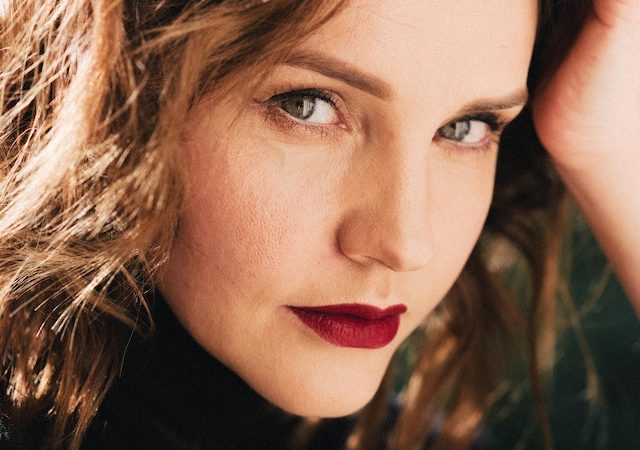Exploring the Factors Behind Oily Hair Dealing with greasy hair can be annoying, but it’s important to know what causes it in order to find effective remedies. Overproduction of oil is usually caused by overactive sebaceous glands. The function of these glands can be affected by different factors, including genetics, hormonal imbalances, and even the
Exploring the Factors Behind Oily Hair
Dealing with greasy hair can be annoying, but it’s important to know what causes it in order to find effective remedies. Overproduction of oil is usually caused by overactive sebaceous glands. The function of these glands can be affected by different factors, including genetics, hormonal imbalances, and even the food we eat. External elements, such as high humidity and pollution, can also play a part in causing an oily appearance. By identifying the root causes, you can effectively target and handle them in your hair care regimen.
Creating an Effective Hair Care Routine for Oily Hair
Having greasy hair can be frustrating, but with the right hair care routine, you can manage and control the oiliness. Here are some steps to build a proper routine:
1. Choosing the Right Shampoo: Look for a clarifying or oil-controlling shampoo specifically designed for oily hair. Avoid shampoos with heavy moisturizing or conditioning properties, as they can weigh down your hair and make it appear even greasier.
2. Frequency of Washing: Washing your hair too often can strip away its natural oils and cause your scalp to produce more oil to compensate. Aim to wash your hair every other day or every few days, depending on how oily it gets.
3. Proper Washing Technique: When washing your hair, focus on massaging the shampoo into your scalp rather than scrubbing vigorously at the ends of your hair. This will help remove excess oil from the roots without drying out the rest of your strands.
4. Conditioner Usage: Apply conditioner only on the mid-lengths to ends of your hair, avoiding applying it near the roots where oil tends to accumulate most quickly. Use a lightweight conditioner that won’t add extra weight or grease.
5. Dry Shampoo: Invest in a good dry shampoo to use between washes when you need quick refreshment without water. It helps absorb excess oil and provides volume while extending time between washes.
6.Blow Drying Technique: When blow-drying, avoid using high heat settings as they can stimulate more sebum production from your scalp, making it greasier faster. Opt for cooler settings instead and direct airflow towards roots during drying process.
7.Styling Products Selection: Choose styling products that are labeled as “oil-free” or “non-comedogenic.” These products will not clog pores on scalp leading to excessive sebum production.
8.Handling Touch-ups Wisely: If you find yourself touching your hair frequently throughout the day, try to break this habit as the natural oils from your hands can transfer onto your strands, making them greasier. Use blotting papers or oil-absorbing sheets designed for hair to remove excess oil gently.
9. Diet and Lifestyle: A healthy diet with balanced nutrition plays a role in managing oily hair. Keep yourself hydrated and reduce intake of oily or fried foods that may contribute to excess sebum production.

Photo by Olga Lioncat: https://www.pexels.com/photo/woman-with-red-lips-and-wavy-hair-in-sunshine-7291221/
Remember that each individual’s hair type is unique, so it may take time to find the perfect routine for you. Be patient and experiment with different products and techniques until you discover what works best for your greasy hair.
An effective hair care regimen specifically designed for oily hair is essential in controlling and preventing excessive oil buildup. To begin, choose a shampoo designed specifically for individuals with oily hair. Search for lightweight, oil-balancing products that are free of sulfates. To prevent drying out the lengths and ends, it is important to prioritize a thorough cleansing of the scalp and roots while being gentle. Apply a small amount of conditioner to the hair ends for added moisture without making it heavy.
1. Watch your diet: Greasy hair can sometimes be a result of an imbalanced diet. Cut back on greasy and fried foods, and increase your intake of fruits, vegetables, and lean proteins.
2. Use a clarifying shampoo: Look for shampoos specifically designed to remove excess oil and buildup from your hair. Use it once or twice a week to keep your scalp clean.
3. Avoid heavy styling products: Heavy gels, creams, and serums can weigh down your hair and make it look greasier. Opt for lightweight products or try using less product in general.
4. Don’t overwash your hair: Washing your hair too frequently can strip it of its natural oils, causing the scalp to produce even more oil to compensate. Aim to wash every other day or every two days.
5. Rinse with cool water: Hot water can stimulate oil production in the scalp, so try rinsing with cool water instead. This will help maintain the balance of oils in your hair.
6. Use dry shampoo: Dry shampoo is great for absorbing excess oil between washes. Spray it onto the roots of your hair and massage it in before brushing or styling as usual.
7.Get regular trims: Regular trims will help prevent split ends which can make greasiness more noticeable as they trap oil at the ends of the strands.
8.Don’t touch your hair too often: Excessive touching transfers oils from hands onto strands making them appear oily faster.To prevent flats use dry shampoo rather than touching up with oily fingers
9.Avoid heat styling tools if possible : Heat opens up cuticles in each strand allowing moisture absorbed opening you up to frizz while simultaneously encouraging more sebum secretion.In case you need hairstyling then use heat protectant sprays prior using heating tools
10.Brush regularly but not excessively : Brushing helps distribute natural oils evenly throughouthair keeping them healthy but don’t overdo it as brushing too much can stimulate oil production.
Dealing with oily hair requires more than just washing it. Here are some professional suggestions to maintain clean and oil-free hair:
Avoid overwashing. Frequent washing of your hair can actually cause more oil production due to the removal of natural oils. Adjust your hair washing routine to every second or third day, depending on how your hair feels and requires.
Use a clarifying shampoo. To effectively eliminate product buildup and excess oil from your scalp, it is advisable to include a clarifying shampoo in your weekly hair care routine.
Opt for lightweight styling products. Select hair products that are specifically formulated for oily hair and have a lightweight or oil-free formula. Stay away from thick serums or creams that can make your hair look oily and weigh it down.
Keep your hands away from your hair to prevent touching it throughout the day. The oils on your hands can make your hair even greasier when transferred onto it.
Tips for Controlling Grease Buildup in Hair
When dealing with oily hair, there are techniques that can assist in keeping your hair appearing clean and full of volume:
Dry shampoo is the ultimate solution for tackling oily roots. Rub the product into the roots, gently massage it in, and remove any extra to soak up oil and give your hair more body.
Embrace updos and braids. Try out different updo hairstyles and braided styles to keep your hair away from your face and scalp. These hairstyles not only conceal oily hair but also give a sophisticated touch to your appearance.
Utilize products that add volume: Integrate volumizing mousses or sprays into your everyday styling regimen to give the impression of thicker, more vibrant hair.
How about considering a fashionable hat or a trendy headband? When your hair is in need of some assistance, grab a trendy hat or headband to hide oily roots and enhance your style.
By incorporating these professional suggestions and techniques into your hair maintenance regimen, you can eliminate oily hair permanently. Experience luxuriously full and lively hair on a daily basis. Goodbye to the annoyance of greasy hair and hello to a confident, oil-free version of yourself.

















Leave a Comment
Your email address will not be published. Required fields are marked with *